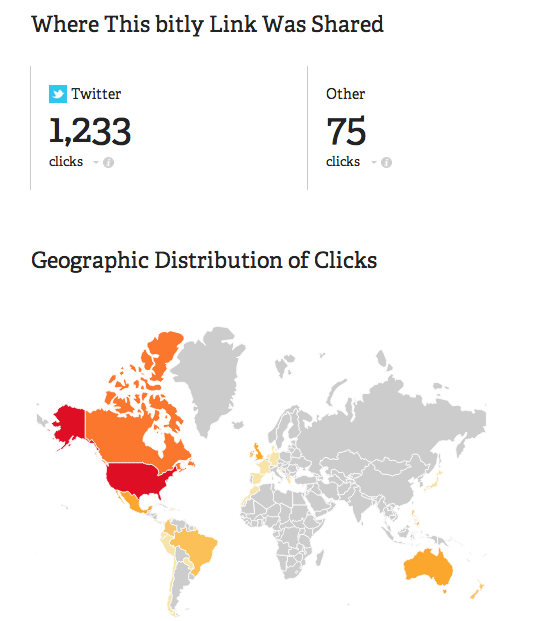Ah, I remember them well. I would log into twitter.com. I would compose my tweet. I would find the link to accompany my tweet. (This was before subtweets back then, we used Twitter to share interesting links and ideas! Crazy, I know.)
And then I would take that link, go to http://bit.ly and shorten the link so that I could fit the link into the tweet.
And then a few years later, Twitter created their own t.co URL shortener, and it happened automatically, and people forgot all about bit.ly.
But: bit.ly is still very much around, and very useful. These days, it does three things well:
 1. It helps you learn more about how your links are being shared. Each bit.ly link has stats attached to it. (The easy way to find it: take the bit.ly link and add a + to the end of the URL, and it’ll take you straight to the stats page.) It’ll show you when the link was clicked, what services it was shared on, and what countries the clicks came from. So you can actually get some good data about where your stories are being shared, especially when you share them on Twitter.
1. It helps you learn more about how your links are being shared. Each bit.ly link has stats attached to it. (The easy way to find it: take the bit.ly link and add a + to the end of the URL, and it’ll take you straight to the stats page.) It’ll show you when the link was clicked, what services it was shared on, and what countries the clicks came from. So you can actually get some good data about where your stories are being shared, especially when you share them on Twitter.
2. You can curate groups of stories. Bit.ly has this featured called “bundles,” and it allows you to create curated links that can then be shared with a single URL. Here’s a sample bundle I made for some recent longform profiles. It was simple to make, and all of those links have the bit.ly stats attached.
3. You can make custom domains. Back in the day, this was all the rage. For my old longform project, stry.us, I bought the domain stry.me, and everything we shared on Twitter carried that custom URL. If you work for a big news organization, a custom URL is a great way to extend your brand on Twitter. I recommend searching for short URLs using Domainr, and then following this tutorial from bit.ly to get your URL set up.
Now get out there and tell some great stories today!
